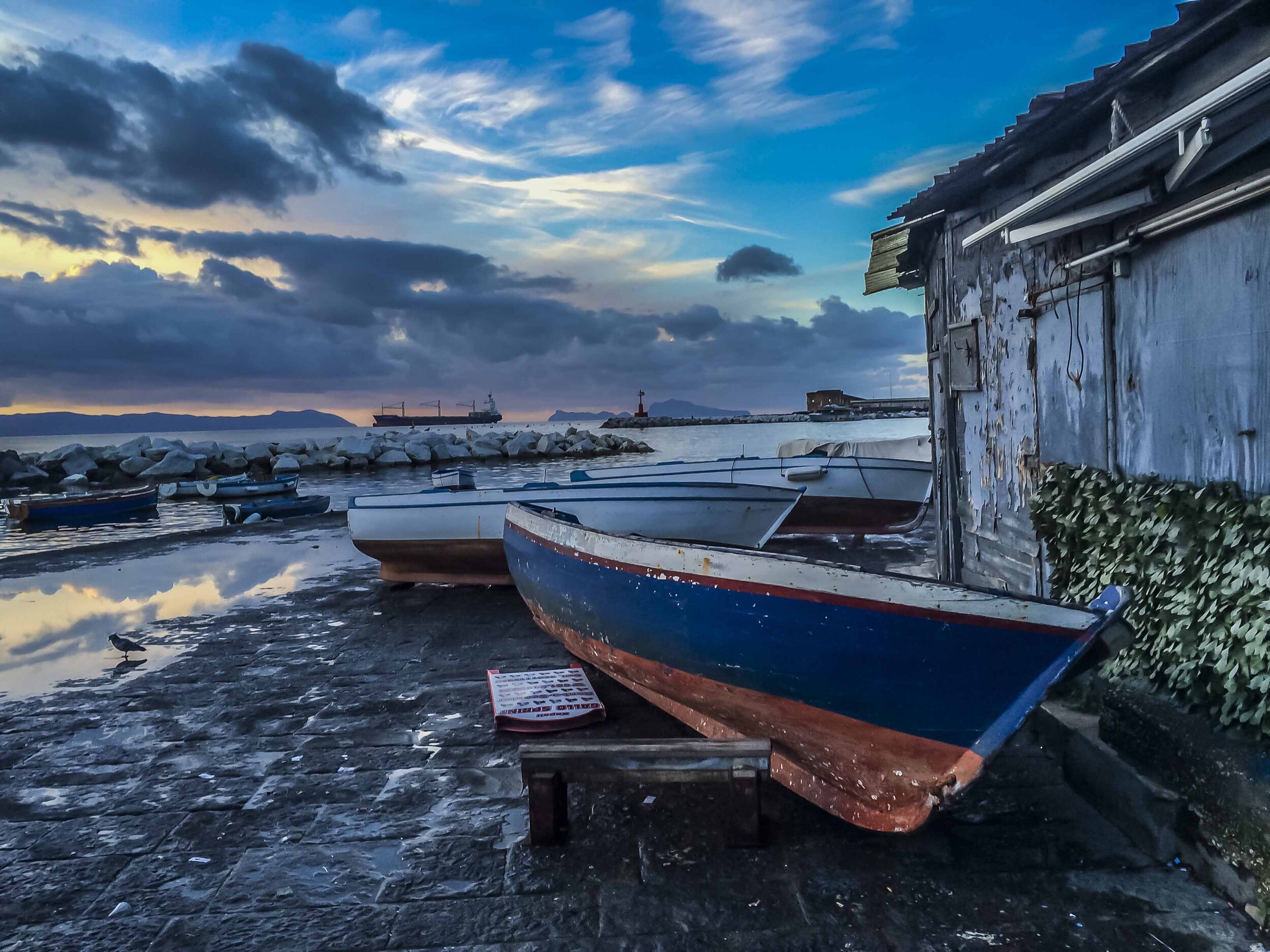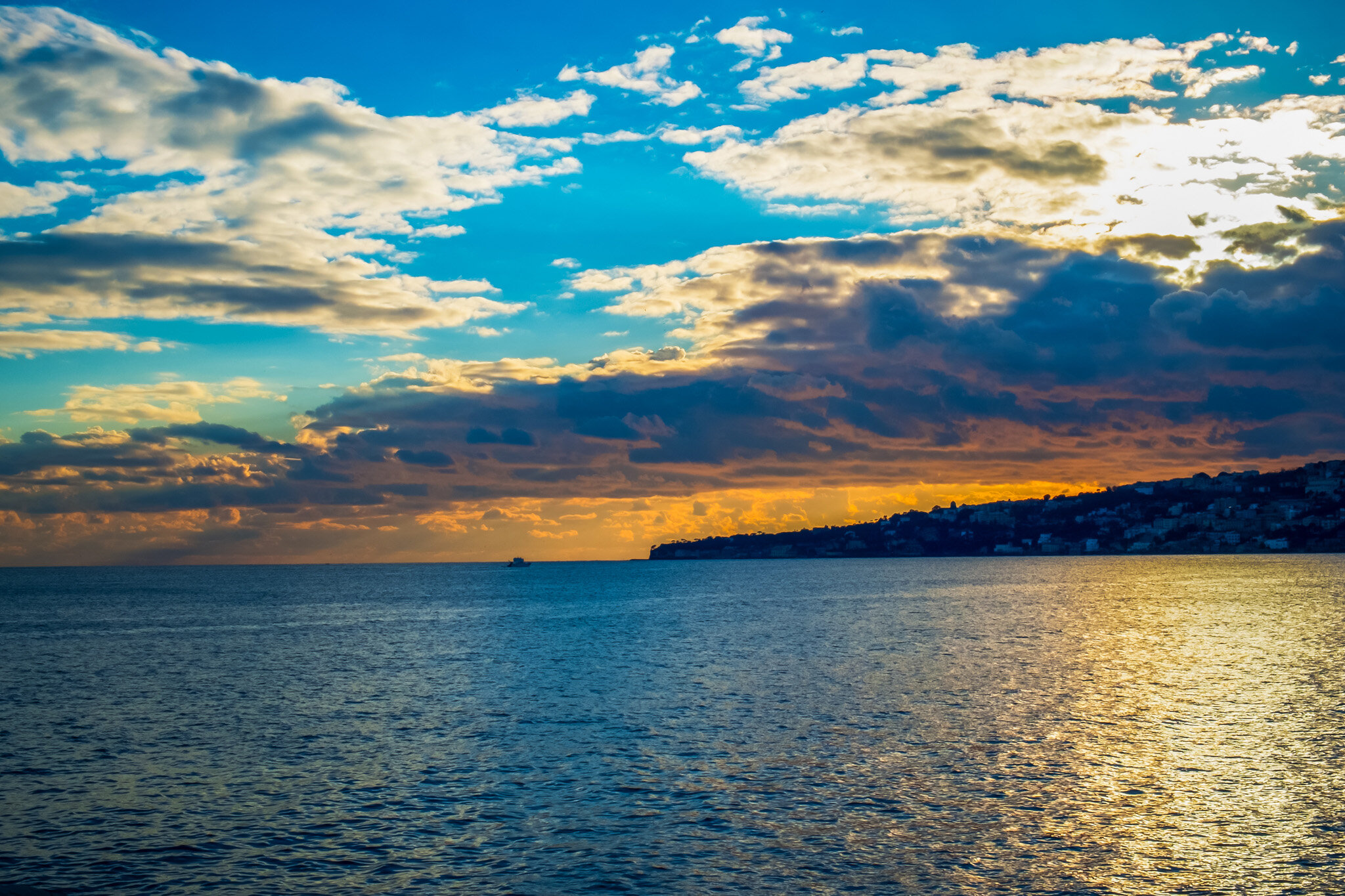Saturday Stroll – A Traveler’s Way Station in the Hinterlands
Saturdays at the mall are a thing of the past, and thank God for that! With so much to see and do here, hardly a weekend goes by that I don’t want to be out and about exploring, and this Saturday was no exception. As part of Naples May of the Monuments, the all volunteer group, Gruppo Archeologico Napoletano held a rare opening of a little known site in Fuorigrotta, a 2nd century CE Roman thermal bath complex that sits just off today’s Via Terracina.
Traffic buzzed up and down the street as we got off at the first bus stop along Via Terracina and made our way by foot. Leaving the mesh fence to our left for a moment, our eyes fixed on the sign across the street that read “Pizza Dough, 1,50 per kilo” and the bulb went off in both of our heads. Oh so much easier than making it ourselves. But that was not what we were here for so we turned our attention to the fence. Running along the side of Via Terracina, it didn’t conceal the site, but one could easily pass by without any notice. Another hidden gem in a city filled with ancient ruins that are typically passed up for the more well known sites of Pompeii and Herculaneum.
We were met by the very gracious Antonio Cammarota, a biochemical engineer at the University and one of Gruppo Archaeologico Napoletano’s volunteers. Extremely knowledgeable about the site and archaeology in general, for the next two hours Antonio took us on a private tour, in English, of this impressive complex. I had been eagerly awaiting the chance to see it because I had been trying to figure out for some time why there was a Roman thermal spa complex right smack in the middle of nowhere, at least what would have been nowhere during the Roman era. In fact, even today the area of Fuorigrotta (meaning outside the tunnel), one of Naples western “quartiere” still feels somewhat disconnected from the city – sort of like a city unto itself on the other side of Posillipo hill. Be that as it may, I would soon learn the answer to my question.
It turns out to make perfect sense. Before the Romans arrived the Greeks needed to establish transportation and trade routes with their western colonies of Pozzuoli, Cuma and beyond. With Posillipo hill standing right in their way, they built a road that traversed Naples northern hilly districts, today’s Soccavo and Pianura. A long and arduous journey, the road went up and over the hills and came down in the marshy zone of Fuorigrotta and then on to the western colonies. When the Romans came along, they found a shorter route, building a road over Vomero hill, but it too came down in Fuorigrotta, right in the area of today’s Via Terracina. A short time later, thanks to the brilliance of the Roman architect Lucius Cocceius Aucto, a more direct route would be established when Aucto found a way to tunnel 705 meters through Posillipo hill. Known as the Crypta Neapolitan, the tunnel remained in use for centuries.
But that still doesn’t explain the thermal baths does it? Well actually it does. No matter how much quicker the trip was, it was still a long way to go. Not the 20 minutes or so it takes to get from the Autostrada to Pozzuoli on the Tangenziale today (unless of course you happen to get stuck in traffic). So what does every road weary traveler need, a rest stop. And that’s exactly what this Roman thermal spa was – a travelers respite right in the middle of the marshy hinterland between Naples and Pozzuoli. And not only a place to stop and rest for a while and rejuvenate, but a place to meet, greet and just generally conduct the business of the day.
Discovered in 1939 during the construction of Mostra d’Oltremare, the site has received precious little attention over the years, yet nevertheless, it has remained fairly intact. And as an added bonus, its position below modern day ground level gives you multiple vantage points from which to orient yourself to the layout of the site and to see how the complex functioned. That most of the decorative elements and its marble and frescoed façade have been lost to time is disappointing, enough traces remain to give you a general idea of how the complex might have looked, and it has the hidden benefit of allowing you to see more fully the construction techniques that were used to build the complex.
The rooms of the complex are typical of an Imperial age spa: a frigidarium – the cold baths area, the caldarium – the warm bath area, several “warm rooms” – the saunaus, a large vestibule, and there is even a beautiful Roman era bathroom, “la latrina’ to boot. But the jewels of the site are the black and white mosaics on the floors of the vestibule, frigidarium and latrine, that though weathered by time still persist.
Thanks to the Antonio Cammarota and the Gruppo Archeologico Napoletano for an excellent tour and for the work they do documenting and safeguarding Naples’ history.
Saturday Stroll – A Traveler’s Way Station in the Hinterlands was first published on NapoliUnplugged.com on May 10, 2010.
Images from Napoli
Learn More
She Studios is a participant in the Amazon Associates Program, among other affiliate programs, an affiliate advertising program designed to provide a means for sites to earn advertising fees by advertising and linking to Amazon.com and other websites. As an Amazon Associate She earns from qualifying purchases.

















